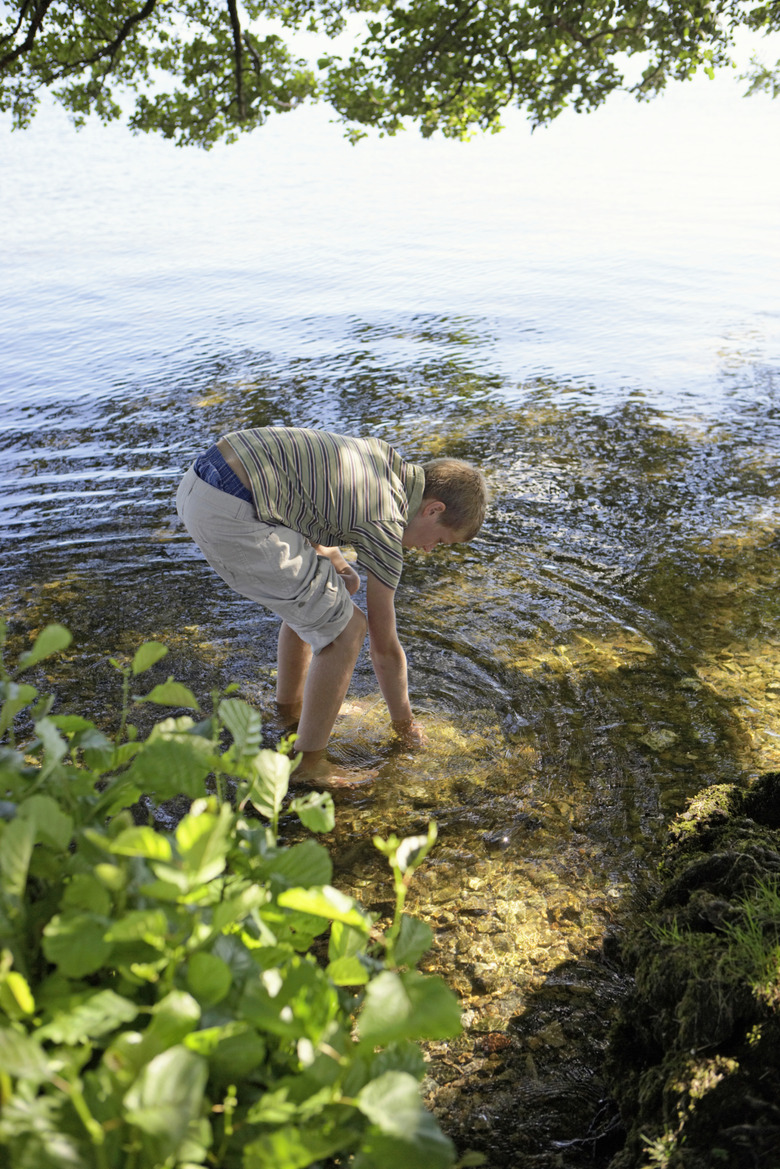Does Dissolved Oxygen Concentration Affect Activity Level Of Freshwater Invertebrates?
The dissolved oxygen level in freshwater impacts all animals living in freshwater lakes, rivers and streams. Pollution is one of the major causes of changes in dissolve oxygen, though natural causes also exist. Aquatic invertebrates are highly sensitive to minute changes in dissolved oxygen, and in general, higher dissolved oxygen leads to more life and more invertebrate activity.
Oxygen Self-Regulation
Oxygen Self-Regulation
One of the major characteristics of freshwater invertebrates that affects their activity levels in the presence of low dissolved oxygen is their ability to self-regulate their oxygen intake. Some freshwater invertebrates are capable of anaerobic metabolism, which allows them to survive in low-oxygen environments. Anaerobic metabolism means that an organism can continue to function without oxygen, at least to some extent. Other invertebrates have exclusively aerobic metabolism, and are thus oxygen dependent. As oxygen declines, they may survive for some time, but with reduced functioning that may lead to death.
Moving Away
Moving Away
Even some organisms that are considered oxygen-dependent can cope in low-oxygen environments. One way of surviving is to simply relocate to higher-oxygen waters. Species from the Gammarus genus, which include freshwater shrimp, become briefly energetic in the presence of low-oxygen. This energy is used to move the Gammarus to higher-oxygen bodies of water, if possible. Other species that can survive above water use this to their advantage. Freshwater snails, for example, will rise to the surface and spend more time there if dissolved oxygen levels should decline.
Life-Stage Variations
Life-Stage Variations
Even invertebrates that can survive low dissolved-oxygen levels in adulthood may be less capable of doing so at a younger age. Invertebrates from the Leptophlebia, a genus of mayflies, often see their larvae die at higher rates in the presence of low oxygen. Ephemera, a different genus of mayfly, experience this same problem in the life emergent stages. Because mayflies tend to be born in the spring, low oxygen during this time is likely to lead to a rapid decrease in population, and thus reduced activity levels overall, because that year's generation of mayflies will be decreased.
Indicator Species
Indicator Species
Changes in dissolved-oxygen level often impact freshwater invertebrates by causing their deaths. Each invertebrate can survive at different levels of oxygen, and so a change in oxygen level alters the varieties of invertebrates present in a body of water. Scientists observe these changes, and make inferences about oxygen levels using what they know about different invertebrates' oxygen needs. Mayflies, especially in larvae form, require highly oxygenated water, while sludgeworms can survive in low-oxygen water. If scientists observe many sludgeworms but few mayflies they can infer that the water they live in is low oxygen. These types of species are called "indicator species" because they indicate a characteristic of the environment — in this case, a body of water's level of oxygen.
Cite This Article
MLA
Wandrei, Kevin. "Does Dissolved Oxygen Concentration Affect Activity Level Of Freshwater Invertebrates?" sciencing.com, https://www.sciencing.com/dissolved-oxygen-concentration-affect-activity-level-freshwater-invertebrates-17195/. 24 April 2017.
APA
Wandrei, Kevin. (2017, April 24). Does Dissolved Oxygen Concentration Affect Activity Level Of Freshwater Invertebrates?. sciencing.com. Retrieved from https://www.sciencing.com/dissolved-oxygen-concentration-affect-activity-level-freshwater-invertebrates-17195/
Chicago
Wandrei, Kevin. Does Dissolved Oxygen Concentration Affect Activity Level Of Freshwater Invertebrates? last modified March 24, 2022. https://www.sciencing.com/dissolved-oxygen-concentration-affect-activity-level-freshwater-invertebrates-17195/
